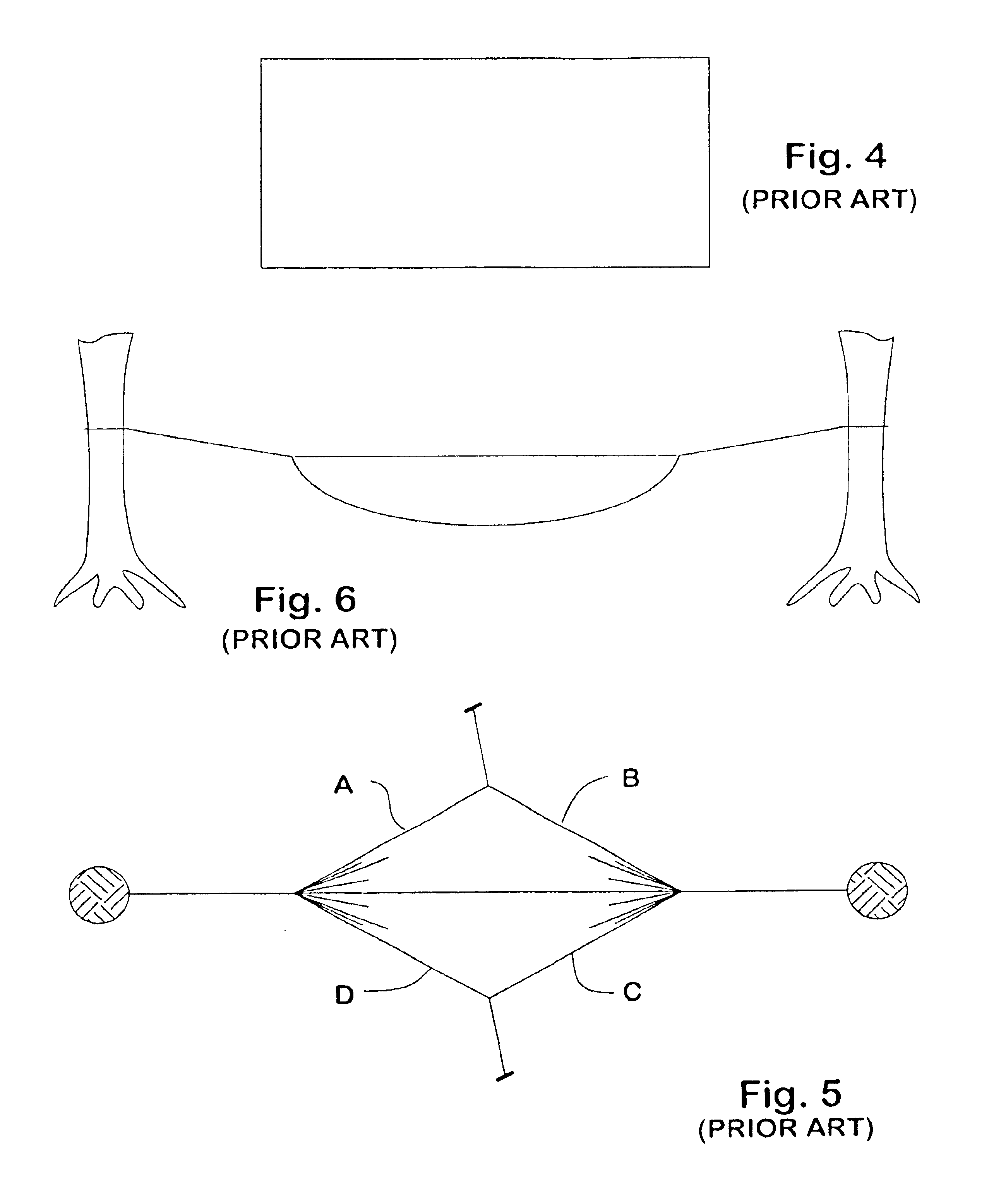Asymmetrical hammock shelter
- Summary
- Abstract
- Description
- Claims
- Application Information
AI Technical Summary
Benefits of technology
Problems solved by technology
Method used
Image
Examples
Embodiment Construction
The present invention, various forms of which are illustrated in FIGS. 8-22, is an improvement over the symmetrical hammocks of FIGS. 1-7.
As FIGS. 8-10 show, as the shape of the bed is modified by shifting the lateral tension points of the hammock in opposite directions so that the tension axis is progressively more diagonal to the suspension axis, the bed effectively becomes longer and narrower. This reallocation of space within the hammock provides an improved geometric fit to the occupant, up to a point. In FIG. 8, the occupant has a knee near one corner of the hammock and an elbow near the other corner. His head and feet are acceptably inside the new perimeter shape of hammock bed. The opposite lateral corners of the bed are near the knee to foot of the occupant, and his head to elbow, respectively, and form a parallelogram. When a rain fly of a similar proportion (but slightly greater size) is positioned above the hammock, it provides improved protection for the occupant, espec...
PUM
 Login to View More
Login to View More Abstract
Description
Claims
Application Information
 Login to View More
Login to View More - R&D
- Intellectual Property
- Life Sciences
- Materials
- Tech Scout
- Unparalleled Data Quality
- Higher Quality Content
- 60% Fewer Hallucinations
Browse by: Latest US Patents, China's latest patents, Technical Efficacy Thesaurus, Application Domain, Technology Topic, Popular Technical Reports.
© 2025 PatSnap. All rights reserved.Legal|Privacy policy|Modern Slavery Act Transparency Statement|Sitemap|About US| Contact US: help@patsnap.com



